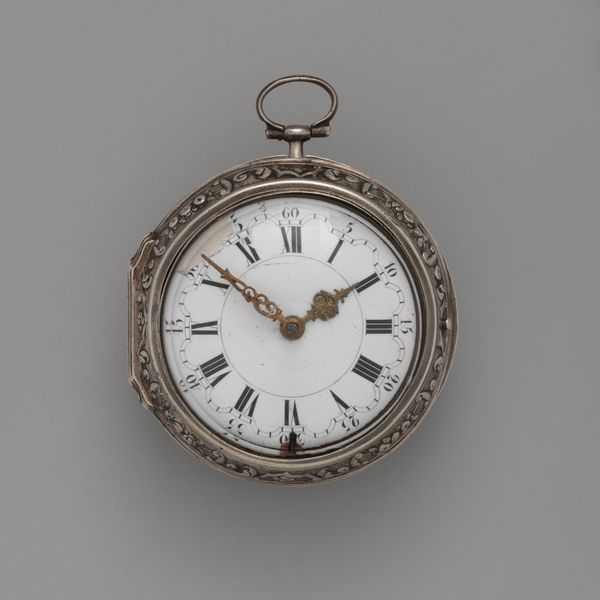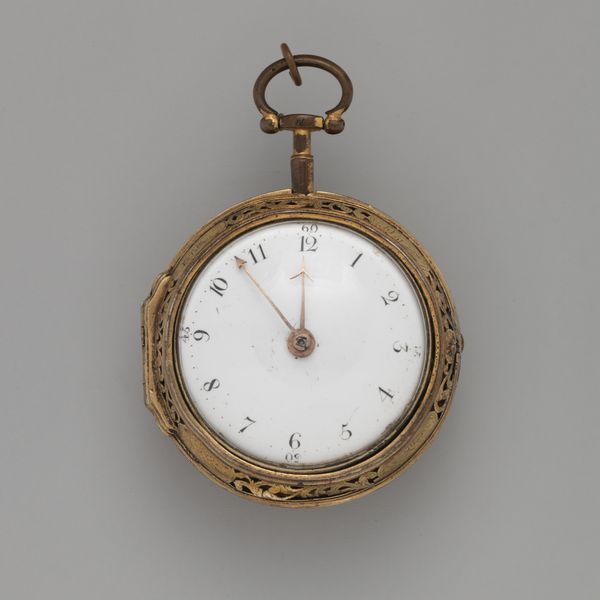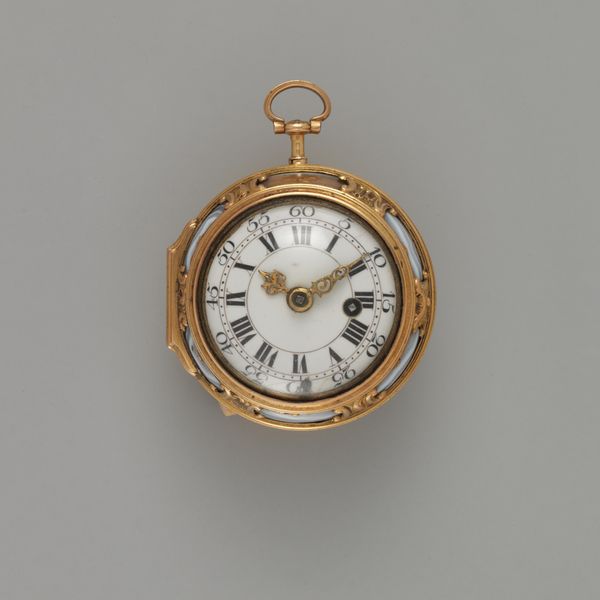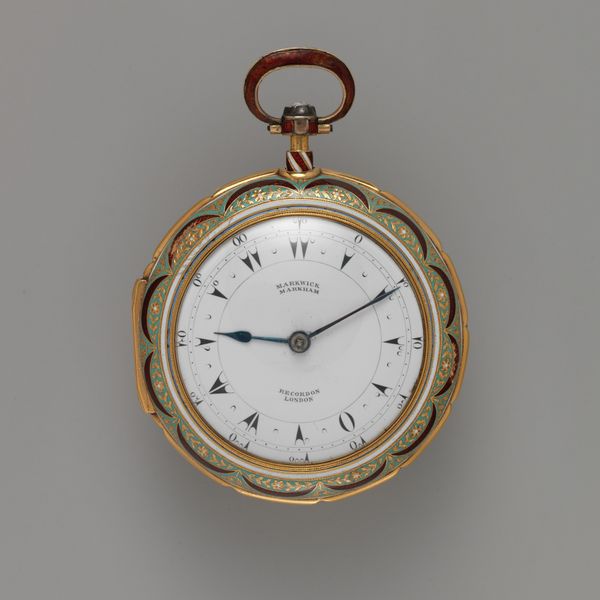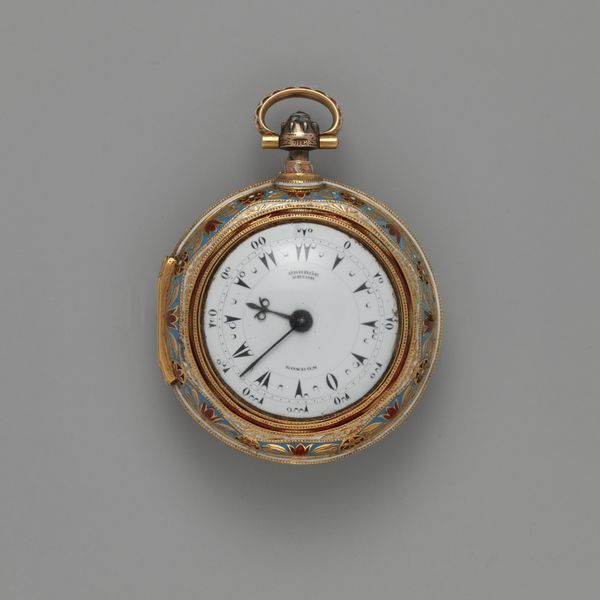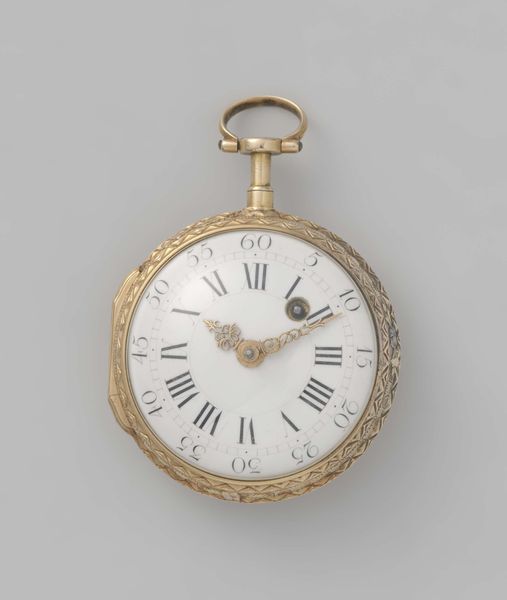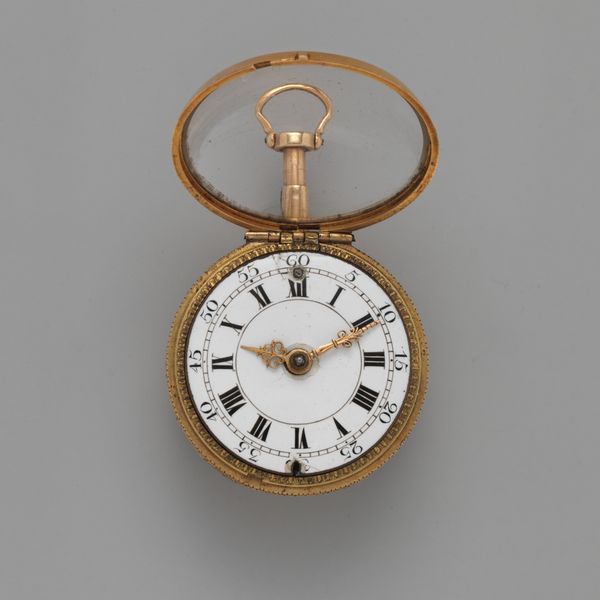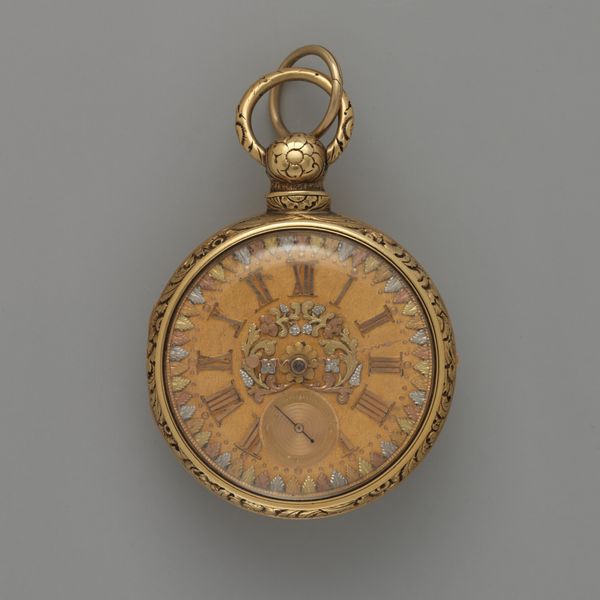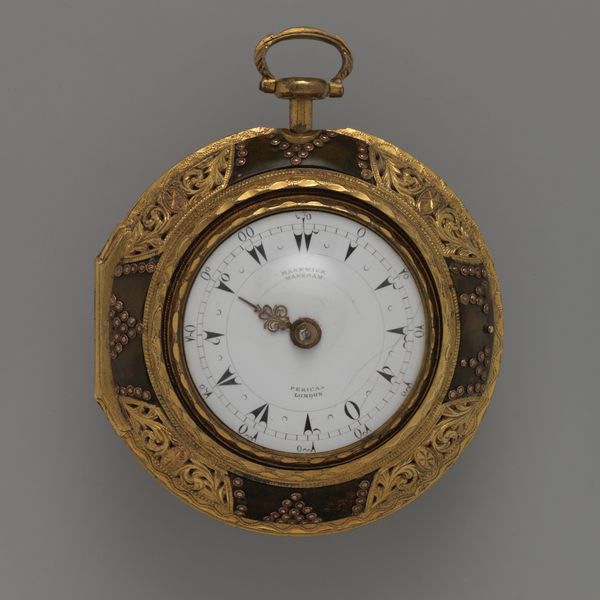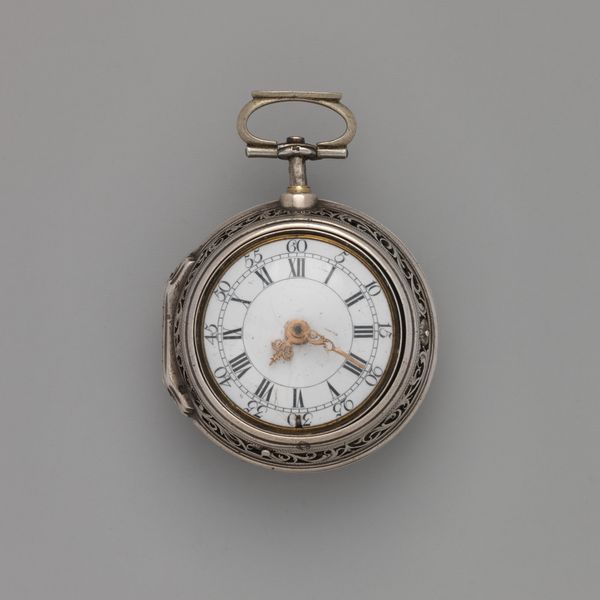
metal, gold, sculpture
#
portrait
#
neoclacissism
#
metal
#
gold
#
sculpture
Dimensions: Diameter: 3 in. (7.6 cm)
Copyright: Public Domain
Editor: Here we have a "Watch", crafted sometime between 1800 and 1815. The piece is gold and metal and currently resides in the Metropolitan Museum of Art. It feels almost too elaborate to simply tell time! What can you tell me about the materiality of this piece? Curator: Well, think about it this way: a watch like this wasn’t just for telling time. The gold and the precious stones speak to a world of labour. The mining of the gold, the craftsmanship involved in setting the stones, the construction of the intricate inner workings—all represent enormous human effort and capital investment. Editor: So it’s less about the aesthetic and more about...the resources? Curator: It’s both! Neoclassical aesthetics dictated form, but the selection of precious materials points directly to power structures. Gold signifies wealth and control of resources, a material manifestation of social hierarchy. The watch becomes a portable signifier of status, openly displayed and consumed. Do you see how the artistry conceals the intensive processes behind it? Editor: Yes, I’m starting to see how the "what" it’s made of and "how" it was made completely changes how we should interpret it. It speaks volumes about consumption during the period! Curator: Precisely! And that changes how we might see a 'simple' object like a watch, right? Editor: Absolutely. I will never look at ornate jewelry the same way again. Thank you!
Comments
No comments
Be the first to comment and join the conversation on the ultimate creative platform.


